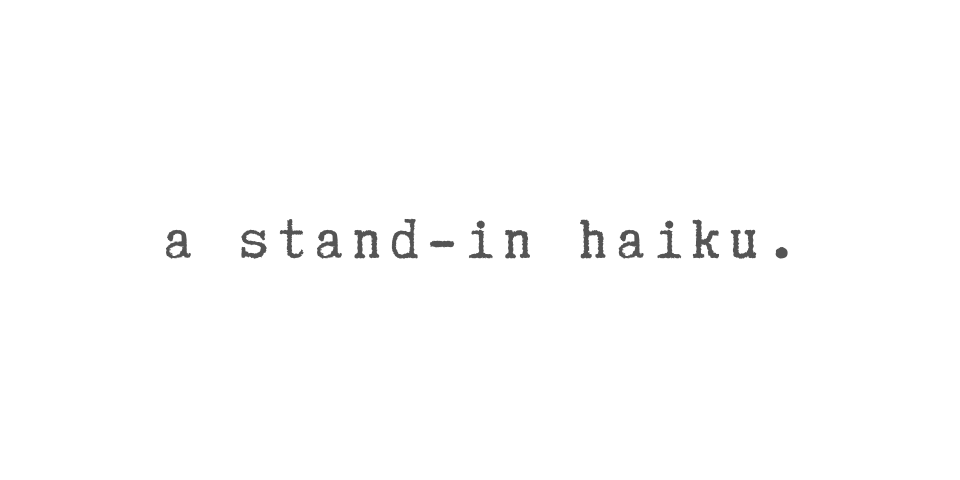Let’s face it: Sometimes the job of the stand-in on a TV and film set can get a bit monotonous. You might get so good at your job that you find it lacks any real challenge. What to do?
Well, how about a challenge?!
We’ve invented a new series at Stand-In Central called Stand-In Challenges. Stand-In Challenges are games you can test yourself in as you work as a stand-in, in order to help develop your skills and become an even better stand-in.
If you like them or have an interesting experience trying them out, please let us know about your adventures by chiming in in the Comments section of the challenge. Below is our first Stand-In Challenge: The Zero Speech Challenge!
– The Editor
Stand-In Challenge #1: The Zero Speech Challenge!
So many times on set, I’ve heard stand-ins told to do something, and then they follow with a reply.
Camera Operator: Jane, take a step to your right.
[Stand-In Jane steps to her right.]
Stand-In Jane: Is this okay?
The thing is, oftentimes for the stand-in, actions speak louder than words. Was Stand-In Jane’s asking “Is this okay?” necessary?
The Ramifications of Unnecessary Speech on Set
Asking the question “Is this okay?” tends to obligate a reply from the camera operator, who potentially is very involved in setting up the shot. In a sense, asking “Is this okay?” after taking a step is not simply a matter of being helpful to the camera department but more a sign of neediness the stand-in has for approval. Your getting approval is probably unnecessary for setting up the shot. More than likely, if you need to step more or less, the camera operator will follow up with additional instruction.
Of course, asking on occasion is not that big of a deal. But asking regularly is a more obvious deal. Compare the stand-in who steps without a follow-up question with the stand-in who steps then adds a follow-up question. The result is that for the stand-in who asks the follow-up question, more time is used up in working with that stand-in than used up when working with the stand-in who simply responds to instruction with action. When minutes or even seconds are precious in a day (such as when a crew is losing daylight or when the hours are getting very long on set), simple things like not needing to ask if a step was okay can mean real dollars to a production.
More Obvious Unnecessary Speech on Set
When you’re standing in with other stand-ins in a scene, the temptation often is to converse. For some stand-ins who have been on a job for a while, they may have found a way to talk quietly such that their conversation does not disrupt setting up shots and leaves them open to receive instruction.
However, even a little bit of conversation can leave a stand-in distracted such that the stand-in can’t easily receive instruction from a camera operator or DP. Being asked to move but not hearing the instruction, then saying “What?” and having the instruction repeated, eats up a few seconds of production time. This is to say that a stand-in who is talking may not hear instruction the first time that a non-talking stand-in might hear more immediately.
The stand-in who is not talking is not necessarily paying attention, but the stand-in who is talking probably is focused on different matters than those related to setting up the shot. All in all, talking on set can slow down productivity, especially when it happens over and over again.
Now on to the challenge!
The Rules of the Zero Speech Challenge
For Stand-In Challenge #1, start your day of standing in with the resolve to speak as little as possible when you’re in place. Aim to respond to a camera operator’s instructions without speaking. Instead, just move as instructed. For example, if a DP asks you to take an eyeline just left of camera, instead of asking “Where exactly?,” simply look just left of the camera and let them adjust your eyeline more if needed.
Aim to do your job with no speech at all. See if you can do everything as an action, without words.
If someone on set requires an answer from you (that is, if someone requires you to speak when you’re on set), aim to answer as simply as possible. Keep to three possible answers if you can: “Yes,” “No,” and “I don’t know.” For example, if a camera assistant is asking if where you’re standing is a new mark, say “I don’t know” rather than “Um, they moved me a bit but haven’t said yet if this is where I should be.”
Try the challenge out for a camera setup. Then, try the challenge out for a whole scene. Eventually, aim for longer lengths of time, such as for a half-day or for a whole day on set. See how long you can go using few to no words as you stand in. See if you can even go a whole day standing in on set without saying a peep!
And one side note: The Zero Speech Challenge applies really only when you stand in on set. When you’re excused from set, the challenge doesn’t need to continue, so feel free to talk when you’re off set!
So, what was the experience like? We want to know! Comment below about your experience of Stand-In Challenge #1: The Zero Speech Challenge!




Leave A Comment